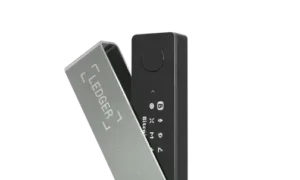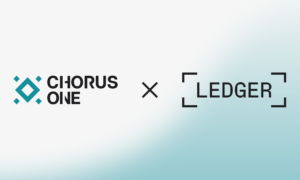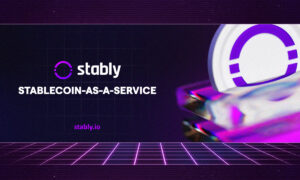Are you ready for a financial revolution? Buckle up because we’re about to dive headfirst into the world of USDC, the Digital Dollar that’s shaking up the way we bank and transact. If you’ve ever wondered what this cryptocurrency is all about and how it’s transforming our everyday lives, then this blog post is your ultimate guide. Get ready to unravel the mysteries of USDC and understand why it holds the key to a future where traditional money meets digital innovation.
Introduction to USDC and its Purpose
USDC, also known as US Dollar Coin, is a stablecoin that has gained significant attention in the cryptocurrency world. It was launched in 2018 by the Centre consortium, which includes cryptocurrency exchange giant Coinbase and payment company Circle.
Stablecoins are cryptocurrencies that are designed to minimize volatility by being pegged to a fiat currency or asset. In the case of USDC, each token is backed by one US dollar held in reserves.
How is USDC Created and Distributed?
USDC (USD Coin) is a stablecoin that aims to provide stability and transparency in the digital currency market. It is backed by the US dollar, making it a 1:1 representation of the USD. But how exactly is USDC created and distributed? In this section, we will delve into the process of creating and distributing USDC.
Creation Process:
The creation of USDC begins with a user depositing US dollars into an accredited bank. These funds are then held as collateral by CENTRE, the consortium behind USDC. This ensures that for every unit of USDC in circulation, there is an equivalent amount of USD held in reserve. The deposits are also subjected to regular audits, providing additional assurance to users regarding the value of their USDC tokens.
Once the deposited funds have been verified and audited, CENTRE mints new USDC tokens at a 1:1 ratio with USD reserves. These newly minted USDC tokens are then sent to exchanges or other participating cryptocurrency platforms where they can be bought or sold by users.
Distribution Process:
The distribution of USDC involves different entities such as CENTRE, issuers, and exchange platforms.
On CENTRE’s end, they distribute newly minted USDC tokens to issuers who act as intermediaries between CENTRE and users. Issuers are responsible for creating wallet addresses for their clients and managing their corresponding funds.
Exchanges also play a crucial role in the distribution process as they allow users to purchase or sell their USDC tokens. They act as a bridge between the traditional fiat currency world and the digital asset market.
Once a user has purchased USDC from an exchange, they can then use it for various transactions, such as making purchases or trading for other cryptocurrencies.
Benefits of Using USDC
There are numerous benefits to using USDC (USD Coin) as a digital currency. In this section, we will explore the advantages of incorporating USDC into your financial transactions.
1. Stable Value: One of the main benefits of using USDC is its stability. Being pegged to the US dollar, each unit of USDC maintains a value equivalent to $1. This means that you can confidently use it for everyday transactions without worrying about price fluctuations that are common in other cryptocurrencies.
2. Fast and Efficient Transactions: With traditional banking, cross-border transactions can take several days to complete and often require high fees. However, with USDC, transfers happen almost immediately and incur minimal fees. This makes it an attractive option for businesses operating globally or individuals sending remittances to family members abroad.
3. Low Transaction Fees: Similar to other stablecoins, such as Tether (USDT) and TrueUSD (TUSD), USDC offers low transaction fees compared to traditional banking services. This is because there is no involvement from intermediary banks or financial institutions in the transfer process.
4. Accessibility: Unlike paper money that requires physical presence or access to a bank account, USDC is a digital currency that can be stored on a variety of platforms such as cryptocurrency exchanges, wallets, and other online marketplaces like PayPal or Venmo.
5. Transparent and Secure: All transactions on the Ethereum blockchain network can be viewed publicly by anyone at any time – allowing for full transparency in all financial actions involving USDC. Additionally, because USDC is built on blockchain technology, it offers a level of security not present in traditional banking systems. All transactions are encrypted and cannot be altered or counterfeited.
6. Programmability: USDC is a programmable currency, meaning that developers can use smart contracts to automate and customize transactions according to specific conditions. This allows for the creation of innovative applications and services that can leverage the stability and speed of USDC payments.
The Differences between USDC and Traditional Currencies
USDC, or the USD Coin, is a digital form of the US dollar that operates on blockchain technology. This means that it can be transferred and held electronically, just like traditional currencies such as cash in your wallet or money in your bank account. However, there are some notable differences between USDC and traditional currencies. In this section, we will explore these differences in more detail.
1. Centralized vs Decentralized
One of the main differences between USDC and traditional currencies is that USDC operates on a decentralized network while traditional currencies are centralized. This means that USDC is not controlled by any central authority or government, whereas traditional currencies are issued and managed by central banks. The decentralization of USDC allows for greater transparency and security as all transactions are recorded on a secure public ledger known as the blockchain.
2. Easily Transferable Across Borders
Another key difference between USCD and traditional currencies is their transferability across borders. While traditional currency transfers often involve complicated processes through banking institutions, USDC transactions can be made instantaneously without any geographical restrictions. This makes it a useful tool for cross-border payments and commerce.
3. Built-in Programmability
One unique aspect of USDC is its ability to be programmed using smart contracts on the blockchain platform it operates on. Traditional currencies do not have this feature, meaning that they cannot execute any predetermined actions once exchanged. However, with programmable code built into USCD’s infrastructure, users can automate tasks such as recurring payments or setting conditions for fund releases.
4. Volatility
While traditional currencies can also experience fluctuations in value, they are generally more stable than digital currencies such as USDC. This is because traditional currencies are backed by a central authority and have a long history of being used as a medium of exchange. USDC, on the other hand, is still an emerging technology and its value can be affected by various factors such as market demand and supply.
5. Security
Security is another important difference between USCD and traditional currencies. Traditional currencies are mostly held in physical form, making them vulnerable to theft and fraud. On the other hand, USCD is stored securely on the blockchain network with advanced encryption techniques, making it less susceptible to hacks and fraud.
6. Accessibility
Traditional currencies are limited in their accessibility, requiring people to physically possess or store them in order to use them. With USCD’s digital nature, it can be stored in various forms such as on digital wallets or exchanges, making it more accessible to users.
7. Regulation
Traditional currencies are heavily regulated by governments through central banks and financial authorities. However, USCD operates independently from any government regulation. While this may provide some advantages such as lower transaction fees and increased privacy for users, it also means that there is no central authority to ensure the stability and legitimacy of the currency.
Potential Impact on the Future of Digital Finance
The emergence of USDC, a digital dollar stablecoin, has the potential to greatly impact the future of digital finance. As we transition into a more digitally-driven economy, cryptocurrencies and stablecoins like USDC have shown immense promise in revolutionizing the way financial transactions are conducted.
One of the main ways in which USDC can impact the future of digital finance is by providing stability and security. As a stablecoin pegged to the US dollar, it eliminates one of the major concerns surrounding cryptocurrencies – their volatility. This stability makes it an attractive option for investors and individuals alike, as it reduces the risk associated with holding or transacting with digital assets.
Moreover, USDC offers faster processing times and lower transaction fees as compared to traditional banking systems. With cross-border transfers often taking several days and incurring high costs, using USDC can significantly streamline this process. It also allows for seamless peer-to-peer transactions without any intermediaries or third parties involved.
Furthermore, USDC has immense potential to increase financial inclusion globally. With traditional banking services often inaccessible to certain populations due to strict regulations or lack of infrastructure, USDC provides a low-cost alternative that can be accessed by anyone with an internet connection. This can empower individuals in developing countries who may not have access to traditional financial services.
Regulatory Challenges and Advancements for USDC
The emergence of USDC, a digital dollar, has brought about significant changes in the financial landscape. However, with any new technology comes its own set of regulatory challenges and advancements that must be addressed for successful adoption and widespread use. In this section, we will dive deeper into the regulatory hurdles facing USDC and the advancements being taken to ensure its legitimacy and stability.
Regulatory Challenges Facing USDC
1. Digital Asset Classification: One of the major challenges faced by USDC is its classification as a digital asset. Currently, there is no clear regulatory framework for digital assets in the United States, making it difficult for regulators to determine how these assets should be treated under existing laws. This lack of clarity can create hurdles in terms of taxation, securities laws compliance, and other legal issues.
2. Compliance with AML/KYC Regulations: As with any currency or financial instrument, USDC is subject to anti-money laundering (AML) and know your customer (KYC) regulations. This means that issuers and users of USDC must comply with strict regulations to prevent money laundering and terrorist financing activities. These compliance requirements can add complexity and cost to operations involving USDC.
3. Regulatory Oversight: The decentralized nature of blockchain-based currencies like USDC also poses challenges when it comes to regulatory oversight. Unlike traditional centralized institutions where oversight is relatively straightforward, decentralized networks are governed by community consensus rather than a centralized authority, making it challenging for regulators to enforce compliance.
Conclusion
The USDC, a fully regulated and transparent digital dollar, has the potential to revolutionize the financial landscape in the United States. With its fast transactions, low fees, and accessibility on various platforms, it offers convenience and efficiency for businesses and consumers alike. As more people begin to understand and adopt this new form of currency, we can expect to see significant changes in how we handle money in our daily lives. The future of finance is here with USDC leading the way towards a more inclusive economy for all.



































